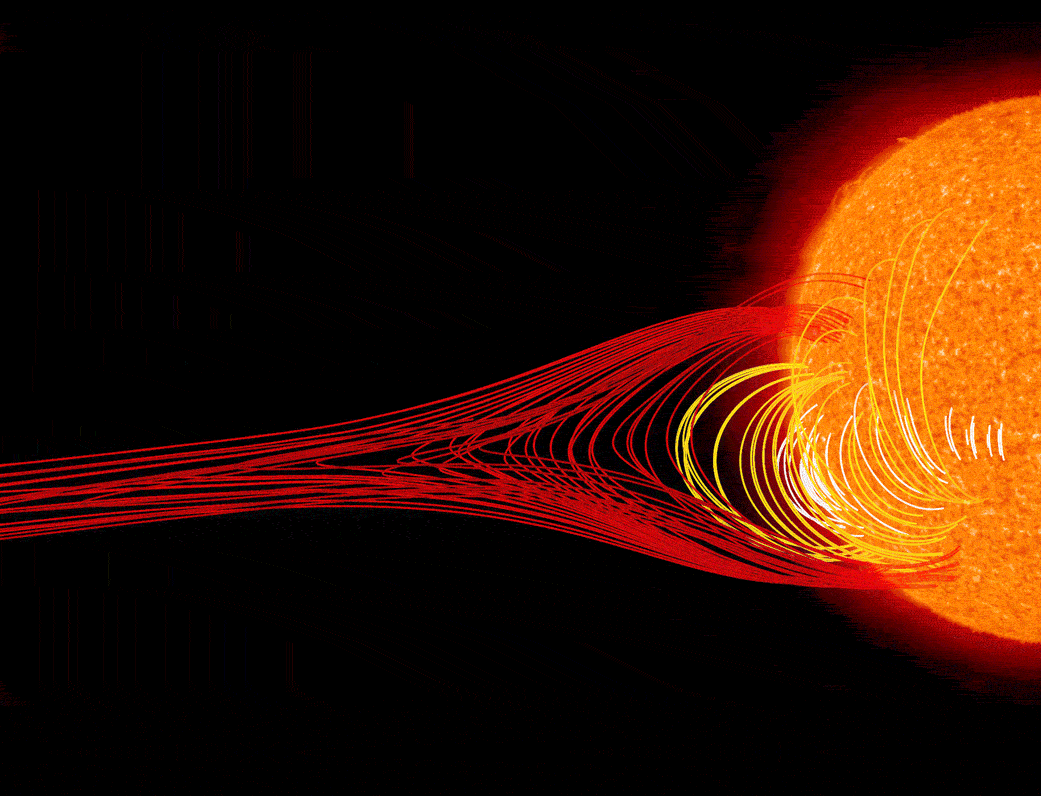'Missing link' explosion on the sun could unravel longstanding solar mysteries

An incredible explosion on the sun is helping scientists uncover new information about what causes powerful solar eruptions and how we might be able to better predict them in the future.
Back in March of 2016, scientists used NASA's Solar Dynamics Observatory and theSolar and Heliospheric Observatory, a joint mission of NASA and the European Space Agency (ESA) to observe a dramatic explosion on the sun. The event showed characteristics of three different types of solar eruptions that usually happen separately but, uniquely, occurred together this time, according to a statement from NASA. Because it included many different types of events at once, scientists investigating the explosion in a new study think this strange phenomenon could reveal what causes all types of solar eruptions.
"This event is a missing link, where we can see all of these aspects of different types of eruptions in one neat little package," Emily Mason, lead author on the new study and solar scientist at NASA's Goddard Space Flight Center in Greenbelt, Maryland, said in the same statement. "It drives home the point that these eruptions are caused by the same mechanism, just at different scales."
Related: The sun's wrath: Here are the worst solar storms in history
There are typically three different varieties of eruptions that can take place on the sun: coronal mass ejections (CMEs), jets or partial eruptions. CMEs and jets are explosive and blast particles and energy out into the vacuum of space.Jets are ejected as thin beams of solar material, and CMEs create massive bubbles of material that are pushed out by the sun's magnetic fields. Unlike these two, partial eruptions originate from the sun's surface but don't make it all the way out into space; the material that erupts just falls back onto the sun.
During the March 2016 eruption, scientists observed hot solar material erupt from a "magnetically active" region of the sun's surface, according to the statement. This ejection was too big to be considered a jet but not quite big enough to be labeled a CME and, soon after the eruption, cooler surface material began blasting from the same place before falling back to the sun. The event seems to have characteristics of all three different types of solar eruptions, so scientists think that they could all be caused by the same phenomenon and, therefore, by finding the mechanism behind this event, they could explain the origins of all solar eruptions.
This is why scientists are referring to the event as a "Rosetta Stone" eruption, which references the Rosetta Stone, an artifact with writing in hieroglyphics, ancient Egyptian demotic and ancient Greek, which helped scholars decipher ancient hieroglyphics at long last.
Get the Space.com Newsletter
Breaking space news, the latest updates on rocket launches, skywatching events and more!
Following the observations of the eruption, scientists continue to study the eruption and others like it, modeling them to investigate the mechanism behind them and the trigger that started them. This is of importance to us here on Earth, in particular, because CMEs release large amounts of charged particles and can interfere with utility grids on Earth and even create danger for astronauts and space technology. So, by better understanding the mechanism behind solar eruptions, scientists hope that they can better predict them and prevent damage from CMEs.
Email Chelsea Gohd at cgohd@space.com or follow her on Twitter @chelsea_gohd. Follow us on Twitter @Spacedotcom and on Facebook.
Join our Space Forums to keep talking space on the latest missions, night sky and more! And if you have a news tip, correction or comment, let us know at: community@space.com.

Chelsea “Foxanne” Gohd joined Space.com in 2018 and is now a Senior Writer, writing about everything from climate change to planetary science and human spaceflight in both articles and on-camera in videos. With a degree in Public Health and biological sciences, Chelsea has written and worked for institutions including the American Museum of Natural History, Scientific American, Discover Magazine Blog, Astronomy Magazine and Live Science. When not writing, editing or filming something space-y, Chelsea "Foxanne" Gohd is writing music and performing as Foxanne, even launching a song to space in 2021 with Inspiration4. You can follow her on Twitter @chelsea_gohd and @foxannemusic.
